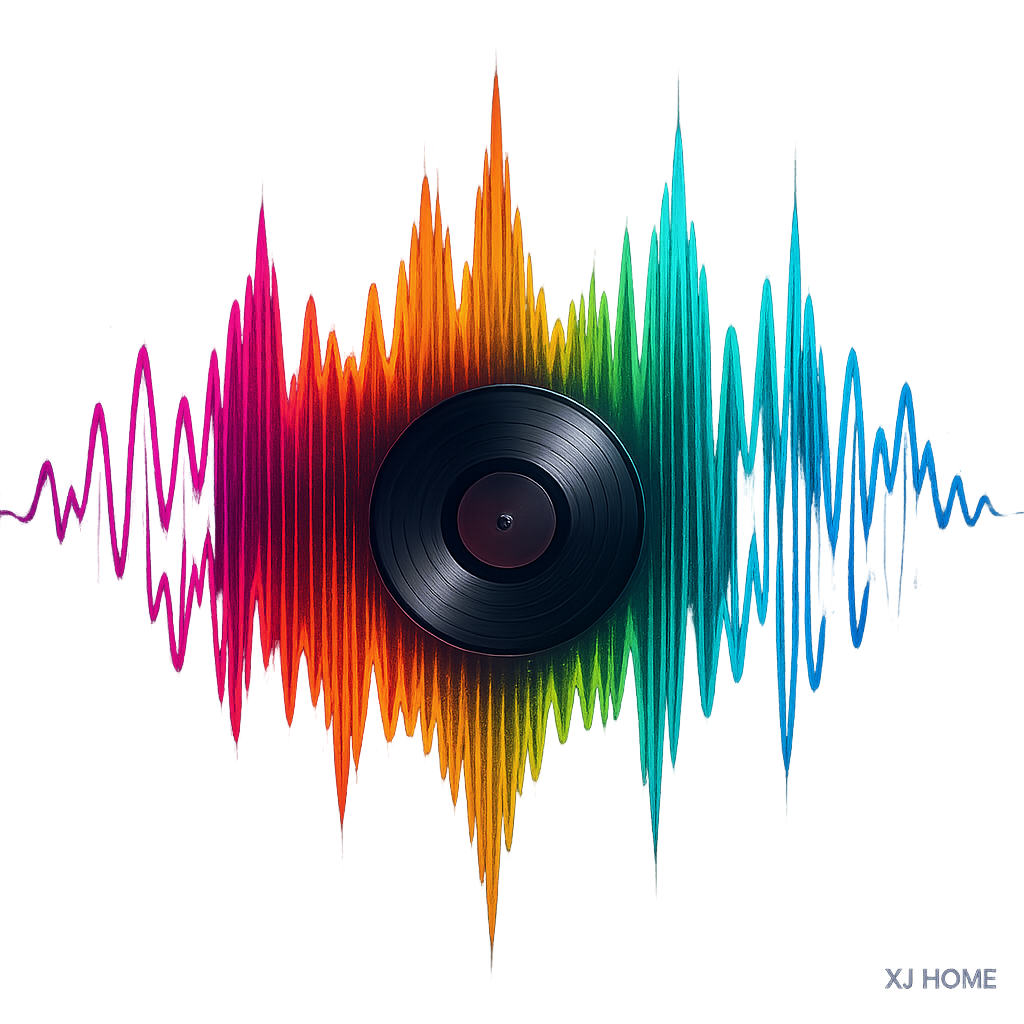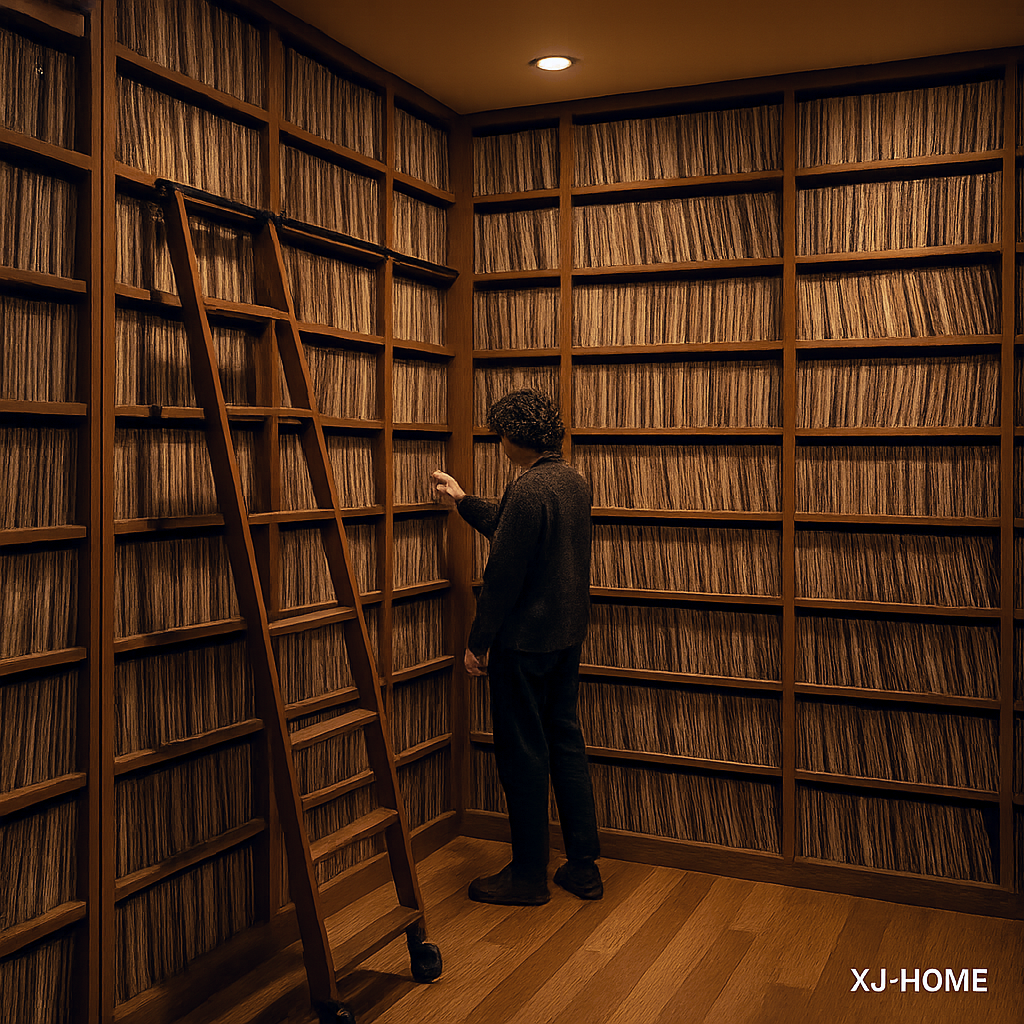In our previous discussion, we explored why a perfectly level surface is the unsung hero of your turntable setup. Now, let's get practical. How do you actually achieve this crucial state of equilibrium? The answer is simple and wonderfully low-tech: a bubble level (also known as a spirit level). This inexpensive, readily available tool is your best friend for ensuring your turntable is perfectly poised to deliver its optimal performance.
Using a bubble level might seem straightforward, but a few nuances can help you achieve true precision. Let's walk through the types of levels you might use and the step-by-step process.
Choosing Your Leveling Companion
Not all bubble levels are created equal, though several types can do the job effectively:
-
Circular "Bullseye" Level:
-
What it is: A small, round level with a single bubble that needs to be centered within a circle marked on its surface.
-
Pros: Gives you an immediate at-a-glance indication of levelness across multiple axes simultaneously. Small and easy to place on the platter.
-
Cons: Can be slightly less precise for identifying exactly which side or corner needs adjustment if you're significantly off. Best for fine-tuning or a quick check.
-
-
Torpedo or Small Linear Spirit Level (approx. 6-9 inches / 15-23 cm):
-
What it is: A short, rectangular level with one or more vials containing a bubble that moves between marked lines. You'll typically use one vial for horizontal leveling.
-
Pros: Excellent for accurately assessing levelness along a specific axis (e.g., side-to-side or front-to-back). Makes it easier to pinpoint which feet to adjust.
-
Cons: Requires you to check at least two perpendicular directions separately.
-
-
Cross-Check Level:
-
What it is: Two linear vials mounted perpendicular to each other in a single housing (often T-shaped or square).
-
Pros: Combines the axis-specific precision of linear levels with the ability to see two directions at once.
-
Cons: Can be slightly larger than a bullseye.
-
-
Specialized Turntable/Hi-Fi Levels:
-
What it is: These are often beautifully machined, heavier levels marketed specifically for audio equipment. Some are designed to fit over the spindle.
-
Pros: Can be very accurate and aesthetically pleasing. The added weight might give a more stable reading on some platters.
-
Cons: Significantly more expensive than standard hardware store levels. A good quality, standard level is usually perfectly sufficient.
-
The Takeaway: For most users, a reliable torpedo level or a good quality bullseye level from a local hardware store will do the job perfectly. No need to break the bank.
Leveling Your Turntable: The Step-by-Step
Here’s how to use your bubble level to get your turntable perfectly flat:
-
Preparation is Key:
-
Ensure your turntable is on the surface where it will permanently reside. This surface should be as stable and inherently level as possible to begin with.
-
Remove any record from the platter.
-
It’s a good idea to secure the tonearm in its rest and, if you're prone to accidents, put the stylus guard on.
-
If your turntable has a removable mat, you can choose to level directly on the platter surface or on the mat if it's thin and lies perfectly flat. For thick or compliant mats, leveling directly on the hard platter surface is generally preferred for accuracy.
-
-
Placement of the Level:
-
Place your bubble level directly on the platter. The platter is the surface the record actually spins on, so its levelness is what ultimately matters most for playback. Avoid placing the level only on the plinth (the turntable base), as the plinth and platter may not be perfectly parallel on all turntables.
-
-
Reading the Level & Making Adjustments (Using a Linear Level):
-
Side-to-Side Check: Place the linear level on the platter so it’s oriented from left to right (parallel to the front face of the turntable). Observe the bubble. Is it centered between the lines?
-
If the bubble is towards the left, the left side is too high (or the right is too low).
-
If the bubble is towards the right, the right side is too high (or the left is too low).
-
-
Front-to-Back Check: Rotate the level 90 degrees so it’s oriented from front to back (perpendicular to the front face). Observe the bubble again.
-
If the bubble is towards the front, the front is too high.
-
If the bubble is towards the back, the back is too high.
-
-
Using a Bullseye Level: Simply place it near the center of the platter. The bubble needs to be perfectly centered within the marked circle. If it's off in any direction, that indicates the high side.
-
-
Adjusting the Feet (If Your Turntable Has Them):
-
Most mid-to-higher-end turntables have adjustable feet that can be screwed in or out to raise or lower each corner.
-
Make small adjustments to the appropriate foot (or feet). For example, if the left side is too high, try screwing the left foot (or feet) in slightly, or the right foot out.
-
Re-check with the level after each minor adjustment. Patience is key. Go back and forth between side-to-side and front-to-back checks if using a linear level.
-
-
No Adjustable Feet? Time for Shims:
-
If your turntable lacks adjustable feet (common on many budget-friendly models), you’ll need to use shims. These are thin, rigid pieces of material placed under the existing feet.
-
Good options for shims include thin pieces of card stock, business cards, thin wood veneer, or specialized plastic or metal shims. Avoid soft, compressible materials like felt or rubber, as they can defeat the purpose.
-
Identify the low corner(s) and place a shim under the corresponding foot. Re-check with the level. Add or remove shims as needed.
-
-
Aim for Dead Center:
Your goal is to get that bubble perfectly centered in its vial(s) or within the bullseye.
Pro Tips for Precision Leveling
-
Level the Support Surface First: If the shelf or rack your turntable sits on has adjustable feet, level that surface first. It makes getting the turntable itself level much easier.
-
Multiple Checkpoints (Optional): If you're particularly meticulous or suspect your platter might not be perfectly flat itself (rare on decent turntables, but possible), you can check the level at a few different spots on the platter.
-
Gentle Touch: Avoid pressing down on the platter when taking a reading, as this can temporarily flex the suspension (if any) or the surface and give a false reading.
-
Consider the Spindle: For ultimate accuracy, some people like to ensure the level is centered around the spindle if using a bullseye, or that a linear level passes over or near the spindle.
Achieving a perfectly level playing field for your records is one of the easiest and most impactful tweaks you can make. It costs next to nothing but ensures your stylus can do its job properly, protecting your records and delivering the clear, balanced sound your system is capable of. This attention to foundational details is something we deeply appreciate at XJ-HOME (https://xenonjade.com), where the pursuit of audio excellence often begins with getting the basics absolutely right. For more on the principles of levels, you can check out general guides like "How a Spirit Level Works" on sites such as HowStuffWorks or similar educational resources.
Happy leveling, and enjoy the enhanced clarity and stability it brings to your vinyl listening!





Leave a comment
All comments are moderated before being published.
This site is protected by hCaptcha and the hCaptcha Privacy Policy and Terms of Service apply.